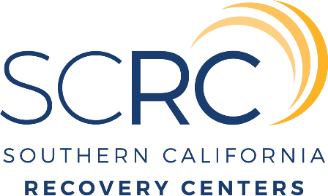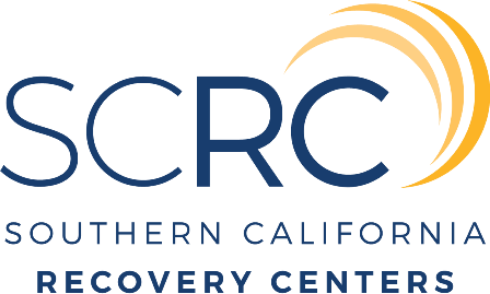Awakening to the Fentanyl Crisis
Historical Context and Rise
Fentanyl’s emergence as a significant public health issue dates back several decades, but its potency and accessibility have led to unprecedented levels of addiction. Initially developed for controlling severe pain, especially in cancer patients, fentanyl has been increasingly diverted for illicit use. This synthetic opioid, nearly 50 to 100 times more potent than morphine, has become a prime concern for medical and law enforcement agencies alike. The alarming rise of fentanyl-related overdoses has necessitated an urgent re-evaluation of addiction treatment strategies. Understanding fentanyl in its historical context is crucial for developing effective solutions.
Impact on Southern California Communities
Southern California has been significantly affected by the fentanyl crisis, impacting communities such as Carlsbad and Dana Point. The region has seen a surge in opioid-related health complications and fatalities, prompting action from both public and private sectors. Local addiction treatment centers have stepped up to address the crisis with innovative and sustainable methods. The implementation of sustainable outpatient rehab in Southern California illustrates a community-centered approach, emphasizing support systems and tailored recovery plans. This impact on communities underscores the need for targeted intervention and resources.
Awareness and Global Trends
Globally, the trend of increasing fentanyl misuse has mirrored patterns seen in Southern California, signaling a widespread and multifaceted crisis. International awareness campaigns have been pivotal in educating the public about the dangers of synthetic opioids. Additionally, collaborative global efforts have aimed at restricting the illegal manufacture and distribution of fentanyl. As global trends continue to evolve, awareness has also shifted towards advocating for comprehensive treatment solutions and harm reduction strategies. The rise in fentanyl addiction strategies in 2024 reflects a growing recognition of the complex nature of this crisis and the need for proactive measures.
Individual-Centric Approaches
Personalized Addiction Recovery
In 2024, the shift towards individualized recovery plans marks a significant evolution in addressing fentanyl addiction. By placing the individual at the center of treatment, recovery plans are tailored to specific needs, enhancing successful outcomes. This approach involves assessing each client’s unique history and challenges, thus crafting a bespoke plan. Southern California Recovery Centers champions this philosophy by integrating therapies that cater to the personal journey of each client. Such personalized addiction recovery efforts ensure nothing less than comprehensive and compassionate treatment, recognizing each person’s unique path to sobriety.
Tailoring Recovery for Unique Demographics: Veterans to CEOs
Recognizing the diverse backgrounds of those battling addiction, treatment strategies are designed with flexibility and specificity. Veterans, for instance, receive personalized recovery solutions for veterans tailored to address both addiction and post-traumatic stress. Meanwhile, treatment programs are curated to meet the demanding lifestyles of professionals. These addiction strategies for CEOs offer evidence-based therapies conducive to managing stressors unique to high-stakes environments. By acknowledging and addressing such unique demographic needs, treatment centers provide far more than generic solutions, embracing comprehensive recovery approaches that cover every angle.
### Addressing Failure to Launch Syndrome
The term ‘failure to launch’ describes young adults who struggle significantly with transitioning into independence, often exacerbated by addiction issues. Southern California Recovery Centers provides dedicated treatment strategies for failure to launch by focusing on both psychological support and skill-building. These programs are designed to empower young clients, providing them with the tools necessary for responsible and independent living. By integrating life skills training with comprehensive therapeutic support, this demographic receives the tailored attention needed to break free from dependency and achieve sustained recovery. This nuanced approach highlights the importance of understanding the interplay between developmental challenges and addiction recovery.
Innovative Treatment Modalities Emerging in 2024
Molecular Therapies and Advanced Opioid Treatments
Molecular therapies for addiction represent a pioneering frontier in treating opioid use disorder. As researchers delve deeper into understanding the biochemical pathways of addiction, targeted pharmacotherapy is gaining prominence. These therapies focus on repairing neurochemical imbalances caused by prolonged fentanyl use, offering new hope for those seeking sustainable recovery. Southern California Recovery Centers integrate these advanced therapies for opioid use to address complex addiction cases. By combining molecular insights with comprehensive clinical support, treatment regimens now promise enhanced efficacy and longevity, acknowledging the intricate physiological changes underlying addiction.
Cutting-Edge Fentanyl Detoxification Methods
Detoxification remains a crucial first step in treating fentanyl addiction, yet traditional methods have often proved inadequate for such a powerful substance. In 2024, innovative detoxification methods for fentanyl have been developed, focusing on minimizing withdrawal symptoms and enhancing patient comfort. These methods employ state-of-the-art medical techniques and protocols explicitly tailored for high-potency opioids like fentanyl. Southern California Recovery Centers leverage such advancements to ensure clients navigate the initial stages of recovery with safety and ease. Emphasizing medically supervised care, their programs minimize risk and promote a smoother transition to subsequent treatment phases, reflecting an elevated standard in fentanyl detox care.
Medication-Assisted Treatment Advancements
Advancements in medication-assisted treatment (MAT) have proven critical in managing opioid use disorders, providing crucial support for those recovering from fentanyl addiction. Emerging treatments focus on optimizing existing medications and introducing novel pharmaceutical options designed to curb cravings and block opioid effects without compromising daily functionality. At Southern California Recovery Centers, cutting-edge MAT protocols are integrated with personalized therapeutic approaches, ensuring a balanced and effective recovery process. This commitment to blending pharmacological support with holistic care underscores the evolving landscape of opioid-induced addiction treatment, signifying a formidable advancement in contemporary addiction medicine.
Holistic Recovery Strategies
EMDR Therapy for Trauma-Informed Care
Eye Movement Desensitization and Reprocessing (EMDR) therapy stands out as a revolutionary approach within trauma-informed addiction care. At Southern California Recovery Centers, the integration of trauma-informed addiction care using EMDR recognizes the profound impact of trauma on addiction pathways. This therapy helps clients reprocess traumatic memories, reducing their potency and influence. By alleviating trauma-related distress, EMDR promotes emotional stability and resilience, critical factors for successful recovery. Such trauma-focused work is particularly crucial for vulnerable populations, addressing root causes and facilitating long-lasting change.
The application of EMDR transcends traditional therapeutic boundaries, offering a multifaceted approach that complements other treatment modalities. Sessions are conducted in a safe, controlled environment where clients can explore and resolve distressing memories without being overwhelmed by them. This, in turn, provides a stabilizing effect that enhances overall treatment outcomes. The focus on individualized care in EMDR allows for customization, ensuring that treatment plans align with the personal histories and needs of each client.
Integrating Seeking Safety Therapy
Seeking Safety Therapy is another pivotal component embraced by our recovery center to address the intersection of trauma and addiction. This evidence-based therapy focuses on coping skills to manage trauma symptoms and substance use simultaneously. By fostering safety in behavior, emotions, and relationships, Seeking Safety enables clients to develop a healthier lifestyle. Such strategic integration aims to empower clients, providing them with practical tools for managing triggers and stress.
In the therapeutic landscape, Seeking Safety Therapy uniquely positions itself by not requiring clients to delve deeply into trauma narratives. Instead, it equips them with skills to handle present-day challenges, making it a favored approach for those who more intensive trauma therapies might destabilize. Its applicability across various demographics, including veterans and young adults, enhances its utility and effectiveness as part of a broader treatment strategy to cater to the intricacies of each individual’s circumstances.
Life Skills and Vocational Training for Reintegration
Life skills and vocational training play crucial roles in the reintegration journey, empowering individuals to navigate post-recovery life confidently. Southern California Recovery Centers places significant emphasis on equipping men with the skill sets necessary for employment and daily living. By incorporating vocational training in rehabilitation, individuals not only gain practical job skills but also cultivate a sense of purpose and self-sufficiency. This comprehensive approach ensures that our clients are better prepared for the challenges of independent living.
The focus on structured sober living approaches complements these initiatives by fostering responsibility and accountability through daily routines. Clients are guided in developing time management, financial literacy, and interpersonal communication skills that bolster their readiness for life after treatment. This holistic approach to recovery recognizes that sobriety is not solely about abstaining from substances but also involves thriving in various life domains. The intersection of therapeutic support with pragmatic skill-building offers a well-rounded pathway to long-term success.
The Role of Harm Reduction and Outpatient Solutions
Fentanyl Harm Reduction Strategies for 2024
As the prevalence of fentanyl in the illicit drug market continues to rise, harm reduction strategies have become increasingly vital. The harm reduction approaches for 2024 focus on minimizing the adverse effects of fentanyl use through education, resource distribution, and community engagement. These strategies aim to prevent overdoses by providing users with access to naloxone, an opioid overdose reversal drug, and safe usage information. Moreover, public health initiatives in Southern California emphasize the importance of outreach and advocacy, seeking to inform communities about the dangers associated with fentanyl. By concentrating efforts on awareness and engagement, these measures enhance public safety while creating pathways for individuals to access treatment services. The integration of harm reduction with treatment paradigms represents a progressive shift in addressing the fentanyl crisis, balancing immediate relief with long-term recovery goals.
Outpatient Rehabilitation for Sustainable Recovery
Outpatient rehabilitation stands out as a practical solution for achieving sustainable recovery from fentanyl addiction. Southern California Recovery Centers exemplify this approach by offering comprehensive outpatient programs that allow individuals to maintain daily responsibilities while receiving structured support. This model underscores the importance of flexibility in addiction treatment, recognizing that recovery is a journey, not a destination. Through evidence-based therapies and continuous care, outpatient programs ensure that individuals receive the support needed to adapt to sober living. The emphasis on maintaining familial and community ties during recovery aids in establishing a robust support network, which is crucial for relapse prevention. By facilitating sustainable recovery, outpatient rehabilitation holistically addresses the complexities of addiction, fostering an environment where individuals can thrive both personally and socially.
Structuring Support: Daily Living and Accountability
Structured support systems play an integral role in the recovery process, emphasizing daily living and accountability. At Southern California Recovery Centers, this concept is woven into the fabric of their treatment philosophy, promoting responsibility through routine and structured interactions. By encouraging stable patterns and self-discipline, clients develop the foundations required for independent and fulfilling lives post-treatment. Accountability is further facilitated through group activities and peer-led support systems, enabling individuals to form meaningful connections within the recovery community. These accountability measures not only enhance the individual’s commitment to sobriety but also foster a culture of mutual support and encouragement. Such structuring is vital in equipping clients with resilience, offering them necessary life skills as they transition into everyday life outside the treatment environment.
Navigating the Insurance and Accessibility Landscape
Insurance-Covered Addiction Treatment
In 2024, the landscape of addiction treatment continues to evolve, making insurance-covered treatments more prevalent and accessible. Understanding the complexities of insurance coverage can significantly alleviate the financial burden of addiction treatment. Southern California Recovery Centers works diligently with insurance providers to maximize coverage and minimize out-of-pocket expenses for clients. By serving as a liaison, they streamline the process, allowing individuals to focus on their recovery journey. This commitment underscores the center’s dedication to removing barriers to treatment access. For those seeking more details, our insurance-covered treatment for addiction provides comprehensive insights into available options.
Making Treatment Accessible for All
Accessibility in addiction treatment extends beyond financial considerations; it encompasses geographical reach, time flexibility, and demographic inclusivity. Southern California Recovery Centers ensures widespread access by offering outpatient services at various locations, including the Carlsbad location. This decentralization allows individuals from different regions to receive customized care without disrupting their daily responsibilities. Additionally, the emphasis on demographic inclusivity ensures that tailored programs are accessible not only to varied age groups but also to diverse professional backgrounds, enabling everyone from veterans to CEOs to find fitting treatment paths.
Ensuring Continuity of Care and In-house Expertise
Ensuring continuity of care is paramount in fostering sustained recovery. At Southern California Recovery Centers, this is achieved by employing an in-house team of experienced therapists and healthcare professionals. By avoiding the outsourcing of therapeutic services, continuity and quality of care are significantly enhanced, allowing clients to build trusting relationships with their providers. This model fosters an environment of stability and confidence as clients progress through their recovery journey. Such expertise in integrated care underscores the importance of a consistent, supportive therapeutic presence, ultimately facilitating a smoother transition to independent living post-treatment.
Charting the Future: Southern California’s Commitment to Solving the Fentanyl Crisis
Community Engagement and Advocacy
Community engagement is at the forefront of efforts to address the fentanyl crisis in Southern California. By fostering strong partnerships with local organizations, law enforcement, healthcare providers, and families, initiatives are being designed to support affected individuals directly. Southern California Recovery Centers, for example, play a pivotal role in this by offering platforms for community dialogue and participation. This engagement and advocacy in Southern California’s fentanyl crisis aims to build strong community support networks that are crucial for spreading awareness and facilitating recovery. Advocacy efforts further ensure that policy changes and resources are directed toward sustainable solutions. By championing these communal efforts, Southern California pioneers a comprehensive approach to addiction recovery that balances prevention, treatment, and community reinforcement.
Educational Programs and Resource Development
Education serves as a powerful tool in combating the fentanyl crisis. Southern California is committed to developing educational programs that inform individuals about the dangers of fentanyl, safe practices, and available treatment options. These programs target a wide range of audiences, including schools, workplaces, and community centers, to maximize reach and impact. By integrating these initiatives with resource development, Southern California Recovery Centers enhances the accessibility of vital information and support services. This combination empowers individuals to make informed decisions about their health and seek appropriate help when needed. Educational initiatives are meticulously designed to equip communities with up-to-date knowledge, fostering a culture of awareness and proactive engagement. Through continuous education and resource provision, Southern California ensures that individuals remain informed and prepared to tackle the challenges posed by the fentanyl epidemic.
A Vision for a Drug-Free Generation
Southern California envisions a future where the fentanyl crisis is significantly alleviated, contributing to the broader goal of a drug-free generation. This vision is driven by comprehensive strategies that emphasize prevention and holistic recovery support. Southern California Recovery Centers lead this charge by implementing multidimensional recovery programs that address not only addiction but also underlying issues such as mental health and socio-economic factors. These efforts are not merely reactive; they are proactive strategies that prioritize long-term community health and resilience. Tackling the root causes of addiction and emphasizing rehabilitation over punishment is crucial in this mission. As these initiatives continue to evolve, they represent the shared commitment of Southern California to foster an environment where new generations can thrive free from the grips of drug addiction. By looking forward, this vision guides current practices and inspires continual progress toward a healthier, drug-free society.
Frequently Asked Questions
Question: How do Southern California Recovery Centers incorporate personalized addiction recovery in their fentanyl treatment strategies for 2024?
Answer: At Southern California Recovery Centers, we emphasize personalized addiction recovery as a fundamental component of our fentanyl treatment strategies for 2024. We understand that each individual’s journey to sobriety is unique, which is why our bespoke plans assess a client’s history, challenges, and needs. By doing so, we enhance the likelihood of successful recovery outcomes. Our center integrates therapies suited to the specific personal journeys of each client, ensuring comprehensive and compassionate care. This approach allows us to address the complexities of fentanyl addiction with tailored solutions that foster long-term sobriety.
Question: Can you explain the innovative fentanyl detoxification methods used by Southern California Recovery Centers?
Answer: Southern California Recovery Centers employs cutting-edge detoxification methods specifically designed for the challenges posed by fentanyl addiction. Recognizing the potency of fentanyl, our programs prioritize minimizing withdrawal symptoms while enhancing patient comfort. We integrate advanced medical techniques and state-of-the-art protocols to facilitate safer detox processes. Our medically supervised care ensures a smooth transition from detoxification to the subsequent phases of treatment, reducing risk and promoting effective recovery. These innovative methods reflect an elevated standard of care, providing clients with the best possible start to their recovery journey.
Question: How do Southern California Recovery Centers address failure to launch syndrome in young adults struggling with fentanyl addiction?
Answer: The failure to launch syndrome, describing young adults struggling with independence, is uniquely addressed at Southern California Recovery Centers. Our specialized treatment programs focus on providing psychological support and skill-building to empower young clients. By integrating life skills training with comprehensive therapeutic support, we equip young adults with the tools necessary for independent living. This approach goes beyond addiction treatment to build resilience and responsibility, ensuring clients can manage the transition into adulthood successfully. Our tailored programs reflect a deep understanding of the interplay between developmental challenges and addiction recovery, promoting sustained sobriety.
Question: What role do harm reduction strategies play in the 2024 Fentanyl Treatment Strategies at Southern California Recovery Centers?
Answer: Harm reduction strategies are integral to our 2024 fentanyl treatment strategies at Southern California Recovery Centers. These approaches aim to minimize the adverse effects of fentanyl use through education, resource distribution, and community engagement. We provide access to naloxone and safe usage information, preventing overdoses and promoting safety. Our public health initiatives emphasize outreach and advocacy, ensuring that our community is informed about fentanyl dangers. By integrating harm reduction with treatment paradigms, we balance immediate relief with long-term recovery goals, fostering a safer environment and encouraging individuals to seek treatment for sustainable recovery.
Question: How do the Southern California Recovery Centers facilitate outpatient rehabilitation for sustainable recovery, as mentioned in The Evolution of Fentanyl Treatment Strategies for 2024?
Answer: Our outpatient rehabilitation model stands out in The Evolution of Fentanyl Treatment Strategies for 2024 at Southern California Recovery Centers. It allows individuals to maintain daily responsibilities while receiving structured and comprehensive support. Through evidence-based therapies and continuous care, clients receive the help needed to embrace sober living. Our programs focus on maintaining community and familial ties and establishing robust support networks essential for relapse prevention. By offering flexibility and sustained assistance, our outpatient model addresses the complexities of addiction, providing a holistic framework that supports individuals in thriving personally and socially, making recovery a journey toward long-term success.





